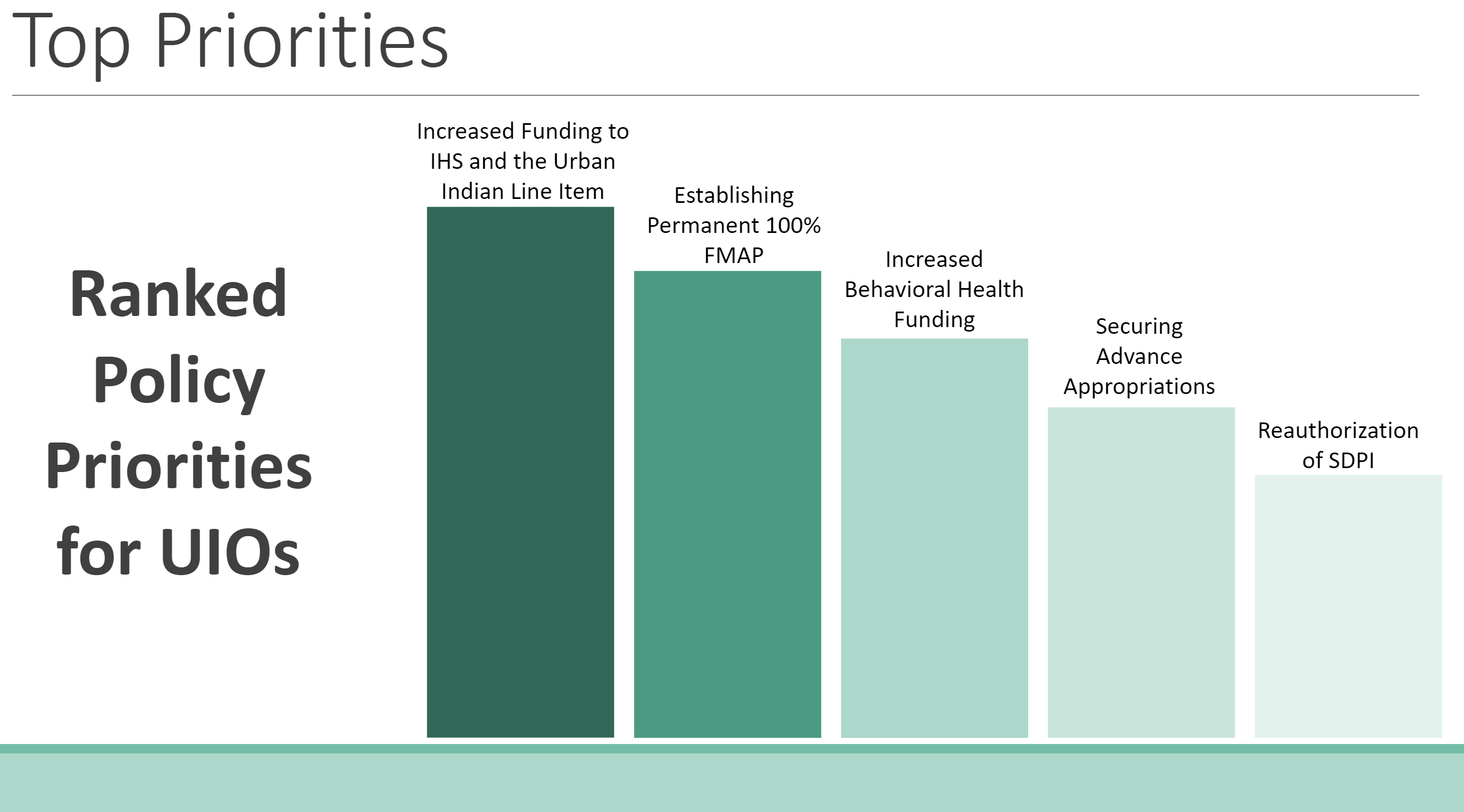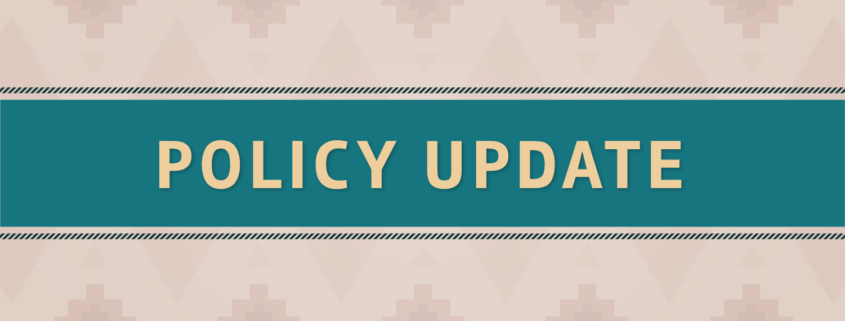Tribal Leaders Highlight Need for Increased Urban Indian Health Funding in Fiscal Year 2025 IHS Budget Requests
On January 25-26, 2023, the Indian Health Service (IHS) held its annual Area Report Presentations Webinar for Fiscal Year (FY) 2025 where Tribal leaders from all 12 IHS Areas and leaders from Native organizations, including the National Council of Urban Indian Health (NCUIH), presented on their budget requests. Many Tribal leaders emphasized the need to increase funding and resources for urban Indian health in the FY2025 budget. Navajo Nation President Buu Nygren stated: “The [Navajo] nation is also supporting the push to support urban Indian healthcare facilities and many Navajos live off the reservation should still be able to receive equitable healthcare through the IHS network system.” Areas also highlighted the need for increased funding for mental and behavioral health, as social isolation during the height of the pandemic negatively affected physical and emotional well-being. Additionally, Area leaders mentioned the critical need for increased funding for Health Information Technology (IT) modernization, permanent authorization of the Special Diabetes Program for Indians (SDPI), and permanent exemption from sequestration.
Background on Budget Formulation
As part of the trust responsibility to provide health care to all American Indians and Alaska Natives (AI/ANs), Tribal leaders present their funding needs each year to the Secretary of HHS and the Director of the Office of Management and Budget. The recommendations are formed through the Tribal Budget Formulation Work Group (TBFWG) and serve as a framework for the Administration in setting budget amounts for their annual requests to Congress. This process ensures the federal government has the resources to provide health care to all AI/ANs in fulfillment of the trust responsibility.
Area Report Highlights
Several Areas featured the work of urban Indian organizations (UIOs) in their presentations and advocated for increased allocation of funding and resources for urban Indian health.
- IHS Phoenix Area highlighted the program increase of $92.6 million identified in FY2024 remains a top priority for FY2025 for urban Indian health. The Area advocated that services must be aligned and enhanced across the Indian health care system.
- IHS Bemidji Area stressed that UIOs are underfunded and rely heavily on restrictive grants which can be financially unstable and recommended an increase of $23 million for urban Indian health in FY 2025.
- IHS Oklahoma City Area stressed that although 78% of AI/AN people reside in urban areas, the funding allocation for urban Indian health only reflects approximately 1% of the IHS annual budget. They recommend that urban Indian health is prioritized as a part of tribal health priorities to advocate that Congress increase the budget to appropriate funding levels.
- IHS Tucson Area highlighted that the urban Indian line item needs to be fully funded to address critical health disparities faced by AI/ANs residing in urban areas. They also shared multiple success stories such as the completion of a new housing development to address the housing shortage and a completed recreation center that brings water and electricity to rural communities.
- The IHS Billings Area Representatives emphasized that the current funding level for the urban Indian population is inadequate and that leaving the reservation does not forfeit the rights to health care.
NCUIH Supports Full Funding of Urban Indian Health and Other Key UIO Priorities for FY2025
Chandos Culleen, NCUIH’s Director of Federal Relations, presented the following UIO priorities for FY 2025 during the Area Report Webinar:
- Urban Indian health funding amount of $977.4 million, an increase of $3.8 million over FY 2024 recommendations.
-
- This amount reflects the average of the draft 12 IHS Area recommendations and is critically needed to address health priorities for Natives in urban areas including:
- Ensuring Urban Indian Health funding keeps pace with population growth.
- Providing funding for UIO facilities and infrastructure.
- Expanding service offerings to Native patients in urban areas.
- This amount reflects the average of the draft 12 IHS Area recommendations and is critically needed to address health priorities for Natives in urban areas including:
-
- Establishing permanent 100% Federal Medical Assistance Percentage (FMAP) for UIOs.
- Increased behavioral health funding for UIOs.
- Maintaining advance appropriations for IHS.
- Special Diabetes Project for Indians (SDPI) reauthorization.

Mr. Culleen emphasized that UIOs only receive funding from one line item in the IHS budget, urban Indian health, which is historically underfunded and does not keep up with rising medical inflation costs. UIOs do not have access to other distinct IHS funding sources such as facilities improvements and upgrades, funding from Hospitals and Health Clinics, Purchase & Referred Care, and Contract Support Costs. Only an increase to the Urban Health line item assures increased service capacity for UIOs.
Next Steps
IHS will hold their FY 2025 National Tribal Budget Formulation Work Group on February 14-15, 2023 where tribal representatives from each Area come together to review and consolidate all the Area’s budget recommendations into a comprehensive set of national health priorities and budget recommendations. NCUIH will continue to advocate for full funding for urban Indian health and increased resources for UIOs.



Leave a Reply
Want to join the discussion?Feel free to contribute!